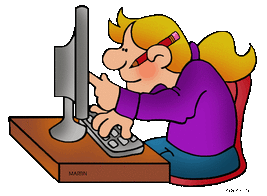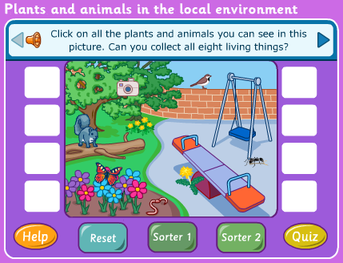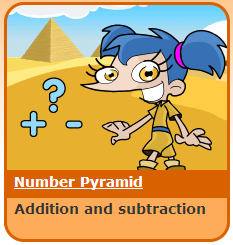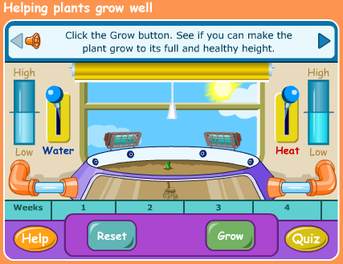K-2 Locate and Interpret Information (RI.2)
PK-2.RI.2. use digital resources (e.g., dictionaries, encyclopedias, graphs, graphical organizers) to locate and interpret information relating to a specific curricular topic, with assistance from teachers, school library media specialists, parents, or student partners
I Can
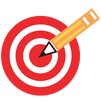
I can use digital resources to locate information.
I can use graphs to understand information.
I can use graphic organizers to learn the meaning of information.
I can use a digital dictionary to find the meaning of a word.
I can use a digital encyclopedia to learn.
I can use graphs to understand information.
I can use graphic organizers to learn the meaning of information.
I can use a digital dictionary to find the meaning of a word.
I can use a digital encyclopedia to learn.
Grade 1 Hypothesis & Knowledge Interaction
I need help finding good books. Describe what you think a book needs for you to decide that a book is 'good'. Let's make some guesses (predictions) about what a book needs to be defined as a good book. I'll write your predictions on the white board. After we pair up, let's review the group rules. Let's investigate (look into) some information about what others believe is needed for a book to be called 'good'. Discuss the following with your partner: 1. What do the stars mean? 2. What does the number inside the circle mean? 3. The colors inside the circle can be (green, yellow or red). What do the different colors mean? After we form teams of 4, let's review the discussion tips. On a scale from 0 to 5, what things on the list below would you want to have a high score for a book? Which would you want to have a low score? 1. Learning 2. Positive (good) Meaning 3. Violence and scariness Discuss and compare what others believe makes a book 'good' with the guesses you made earlier. Describe what has changed in how you decide what a good book is. |
Grade 2 Hypothesis & Knowledge Interaction
I need help finding good TV shows. Describe what you think a TV show needs for you to decide that a show 'good'?
Let's make some guesses (predictions) about what a TV show needs to be defined as a good show. I'll write your predictions on the white board. After we pair up, let's review the group rules. Let's investigate (explore) some information about what others believe is needed for a TV show to be called 'good'. Discuss the following with your partner: 1. Number of stars in the rating needed for this to be good. 2. The lowest number in the circle for this to be good for a kindergartener. 3. What color (green, yellow or red) indicates this to be good for a kindergartener. After we form teams of 4, let's review the discussion tips. On a scale from 0 to 5, what score would this need (high or low) for it to be a good TV show for a kindergartener? 1. Learning 2. Positive (good) Meaning 3. Violence and scariness Discuss and compare what others believe makes a good TV show with the predictions you made earlier. Describe what has changed in how you decide what a good TV show is. |
Word Family Sort

Graphic organizers use pictures to help interpret information. When you interpret something, you find a way to understand the meaning of it. Can you understand the meaning of rhymes and sort words into families? You will need to know how letters sound for this graphic organizer!
Construct a Word

Do you understand the meaning of letters and the sounds they make? Do you know how to combine letters to make words? Let's find out!
Puzzle Me Words
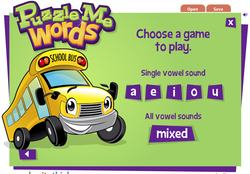
Properties of Matter
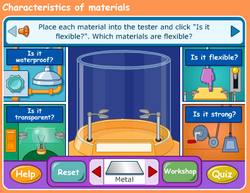
P.PM.02.12 A property describes how an object looks, feels, or acts. Matter is anything around you in the form of a solid, liquid or gas.
Color, size and shape describe how matter looks. How something feels can be described by its texture or hardness.
Use this graphic organizer to help you describe how an objects acts. Does it act like it is strong? Does it act flexible? Can you find the meaning of words like waterproof and transparent? Don't be shy, give it a try!
Color, size and shape describe how matter looks. How something feels can be described by its texture or hardness.
Use this graphic organizer to help you describe how an objects acts. Does it act like it is strong? Does it act flexible? Can you find the meaning of words like waterproof and transparent? Don't be shy, give it a try!
Digital Encyclopedia Science
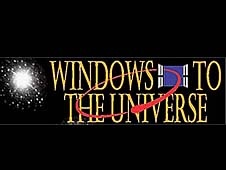
R.IT.03.01, E.SE.03.22
Imagine your teacher has given you the assignment to locate information about ways the earth's surface changes. Would you rather research earthquakes or volcanoes? Let's split the class into an earthquake research team and a volcano research team. Now find a partner within your team to work with.
NOTE - Encyclopedias METS K-2 moved per request to cover Grade 3 quarter 3 ELA & Science GLCE to identify and describe ways the earth's surface changes such as erosion, glaciers, volcanoes, landslides & earthquakes.
Imagine your teacher has given you the assignment to locate information about ways the earth's surface changes. Would you rather research earthquakes or volcanoes? Let's split the class into an earthquake research team and a volcano research team. Now find a partner within your team to work with.
NOTE - Encyclopedias METS K-2 moved per request to cover Grade 3 quarter 3 ELA & Science GLCE to identify and describe ways the earth's surface changes such as erosion, glaciers, volcanoes, landslides & earthquakes.
Digital Dictionaries

R.WS.03.08
Use the Wordsmyth website to look up 3rd quarter, 3rd grade words to solve a crossword puzzle. Demo how to get to Wordsmythe; Display the crossword puzzle, demo how to choose a word from the word bank, look it up in the WordSmythe children's dictionary, then find the matching definition on the crossword puzzle and fill the word in on the puzzle Cross off the word from the word bank and the number on the puzzle.
Use the Wordsmyth website to look up 3rd quarter, 3rd grade words to solve a crossword puzzle. Demo how to get to Wordsmythe; Display the crossword puzzle, demo how to choose a word from the word bank, look it up in the WordSmythe children's dictionary, then find the matching definition on the crossword puzzle and fill the word in on the puzzle Cross off the word from the word bank and the number on the puzzle.
| 3rd_grade_vocabulary_crossword_puzzle.docx | |
| File Size: | 16 kb |
| File Type: | docx |

Digital Dictionary Game
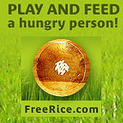
For every correct answer to this site's endless quiz, ten grains of rice are donated to the UN World Food Program. Start on the easiest level for English vocabulary, then change subjects to:
1. Engish Grammer
2. Multiplication Table
1. Engish Grammer
2. Multiplication Table

